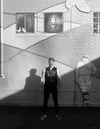Queerness in Colorado Springs
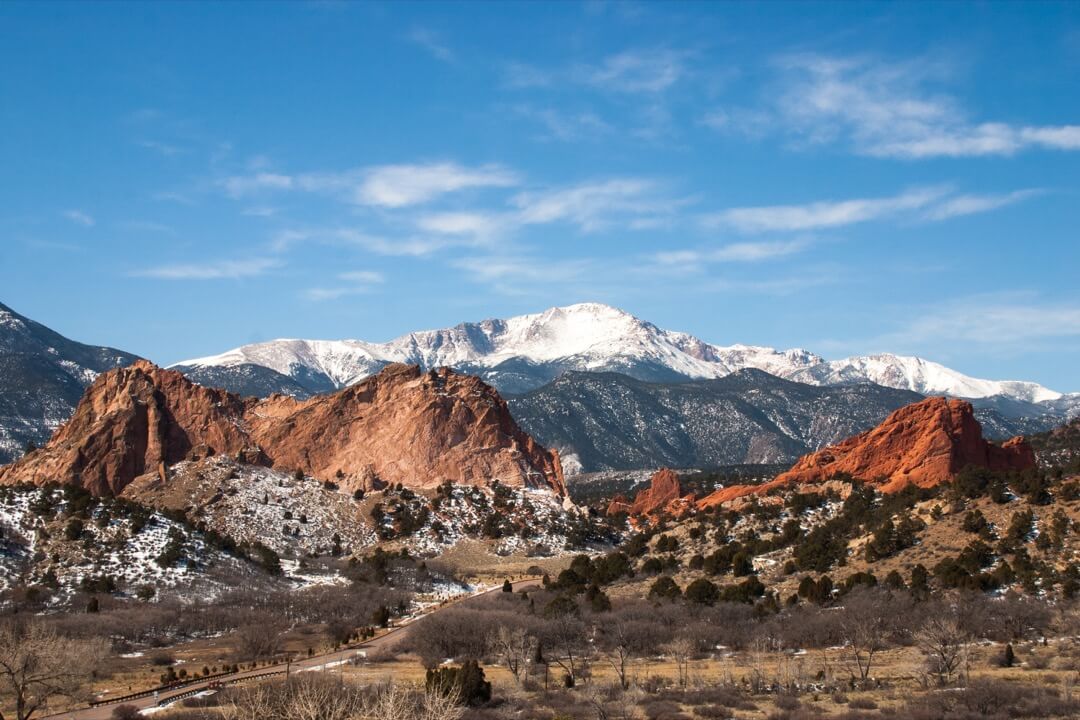
Today Annie Howard looks back on the one year anniversary of the Club Q nightclub shooting and reflects on growing up queer in Colorado Springs.
I published another excerpt from A Creature Wanting Form yesterday which you can read below or jump directly to here.
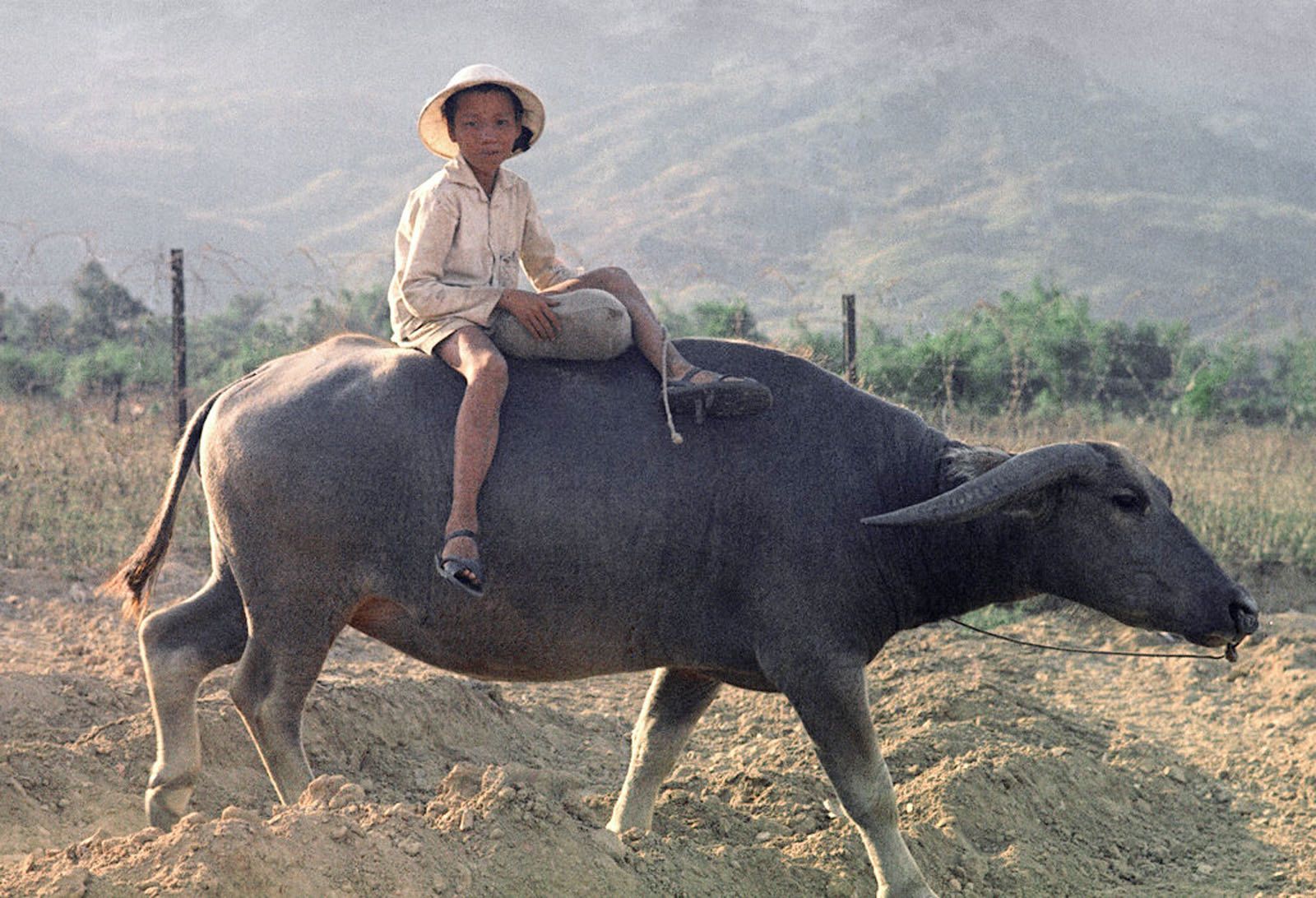
You know the drill. Paying for great contributors like the one we have today costs money so please chip in if you enjoy what you read in this newsletter. Thank you as always.
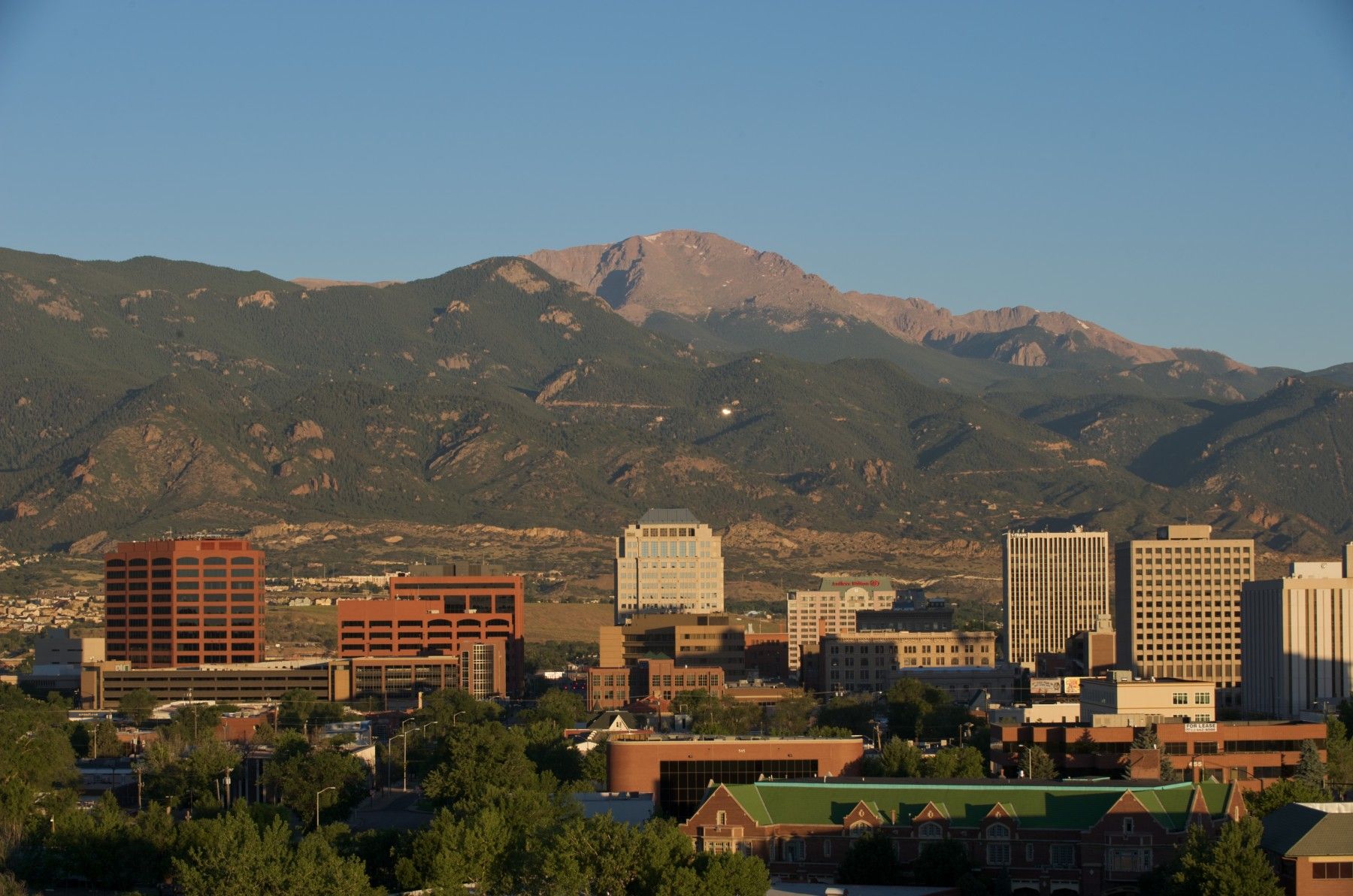
A logical endpoint of the rhetoric that had already condemned us
by Annie Howard
Was it my first encounter with queerness? Truthfully, I’m not sure. But in the storehouse of my memory, fuzzy and imprecise, I only began to think about gay identities because of a dog that mooed like a cow. A metaphor standing in for the gay person who only ever knew how to be that way, gayness entered my life with the “Born Different” advertising campaign, introduced only in my hometown of Colorado Springs, Colorado. Brought to a city characterized in the national press as being “openly biased against homosexuals,” the campaign now stands out in my mind at a critical juncture in both my own winding path towards identifying as queer, and a fascinating stand-in for many questions I continue to ask of how queerness operates as a function of the surroundings from which it emerges.
“Born Different” arrived in the fall of 2006, on the cusp of my 12th birthday, just a few days after the election in early November. On that year’s ballot, Colorado residents voted on Amendment 43, a measure that would introduce an initiative, similar to another originally passed in 1992, that formally changed the state’s constitution to outlaw any form of queer marriage. Disappointed that the previous measure had been deemed unconstitutional in 1994, the year I was born, the idea to further outlaw gay marriage (still illegal, even without the language) was revived just over a decade later. In 1992, Amendment 2 passed with 53 percent of the vote; in 2006, with more than a decade of intervening mainstream gay organizing that sought to normalize queer life through an appeal to the institution of marriage, the anti-queer vote total expanded anyways, with Amendment 43 winning more than 55 percent of the vote. Then, once more, the measure was struck down by the Colorado Supreme Court, leaving gay marriage in legal limbo until 2014, when it was adopted by the state less than a year before Obergefell v. Hayes made it legal nationwide.
Clearly, this was a divisive issue on a statewide level, though not polarizing enough to reflect any positive shift in the public’s perception of queer people at the time. But the close outcome on the statewide level belies the sharper hostility against gay marriage in my hometown. In 1992, El Paso County, the place I grew up, voted 65.9 percent in favor of banning gay marriage; in 2006, the numbers grew to 66.2 percent. In that environment, the nearly million-dollar “Born Different” campaign made a lot of sense: the project responded to an active political campaign, working through an indirect but emotional appeal to just view gay people as inescapably themselves, unable to choose such a lifestyle, and undeserving of scorn for ultimately embracing their identities. Almost all of this sailed over my head as a budding pubescent boy, I’m sure. Still, I can vividly recall seeing the mooing dog signs in yards and front windows throughout my neighborhood, a liberal-ish bubble relatively close to downtown. No matter what else I gleaned in that moment, one message remained clear to me: those that are different are sure of themselves in that difference, however strange it might be to others. A mooing cow makes little sense to our typical sensibilities, but if that’s all the poor, helpless dog knew to do, then who are we to judge?
I thought of the mooing dog again for the first time in 2021, a flashbulb memory that immediately offered a newfound context for the many feelings of separation I’ve felt across my life from the place that made me. The sense of halfhearted liberal tolerance, streaked with traces of heartfelt solidarity that would prove more significant as I got older, was the bedrock of my childhood, even within the larger context of a city whose baseline political outlook skewed deeply conservative. Sheltered within the downtown bubble, I traveled into my teenage years largely immune from the city’s right wing tendencies. Though I self-consciously defined myself against the fiscal, military, and religious conservatism in high school, penning op-eds about Christian hypocrisies and the city’s broken tax system for my school newspaper, I primarily defined myself against these principles in the abstract, not yet aware of how intimately they implicated a sense of personal identity as yet undefined.
All of those years of generalized homophobia boiled over on November 19, 2022, the night before Transgender Day of Remembrance. The next morning, I awoke to see the words “Club Q” and “Colorado Springs” and “condolences” flash across my Twitter feed, as the reality of what had transpired the night before settled in. A gunman had entered one of the only queer nightlife spaces in the city, killing five and injuring 25 more. The mass murder was a logical endpoint of the rhetoric that had already condemned us in so many other ways throughout the years, and as I tried to make sense of my relationship to the news over 1,000 miles away in my adoptive home of Chicago, I was once more reminded of why I’d needed to leave in the first place.
The shooting made me think of former New Life pastor Ted Haggard, a man who called the Springs “the Vatican of evangelical Christians” in the early 90s, as its coterie of conservative Evangelicals made Colorado “the only state to ever pass a law making it legal to discriminate against people based on sexual orientation,” according to the New York Times. By the time conservatives had renewed their attack on gay rights with the Amendment 43 campaign in 2006, Haggard was one of the nation’s leading Christian voices, preaching to more than 14,000 each weekend. According to a Harper’s Magazine profile published in May 2005, “No pastor in America holds more sway over the political direction of evangelicalism than does Pastor Ted, and no church more than New Life.”
Just as the Amendment 43 campaign reached its crescendo, shocking news came to light: Haggard was accused of maintaining a three-year relationship with a male prostitute named Mike Jones, who came forth in disgust as he witnessed the pastor use his pulpit each Sunday to condemn homosexuality in all its forms.
“I felt it was my responsibility to my fellow brothers and sisters, that I had to take a stand, and I cannot sit back anymore and hear (what) to me is an anti-gay message,” Jones told a radio show at the time, echoing a sentiment that even I could begin to understand as a 12-year-old. What good are one’s loudly-spoken religious principles when they’re directly contradicted by one’s material actions?
Club Q brought a lot of unsettling memories back into view, sharpened the contrasts in what I’d found upon moving away, and served as a reminder of the community I’d never known I needed when I was younger. Even with so many of my foundational relationships in the Springs, the attack made it feel like my queer self would only ever be found elsewhere, making the only childhood home I’d ever known somewhere I could never truly be myself.
Things shifted.
I didn’t know how to be gay in Colorado Springs. But that wasn’t the same for countless others who had been there my whole life, and countless more who would move to the city in the years after I’d left. As a newspaper clipping that my grandmother had given me in 2021 explained, El Paso County was home to at least 2,900 trans adults, and as the billboard put up by the local Parents and Friends of Lesbians and Gays (PFLAG) reminded drivers on the busy Colorado Avenue corridor, “Someone you know is transgender.”
Even as I looked back on my own time in the city with mixed feelings, the shock of the Club Q shooting prodded me to forge new bonds. My mom introduced me to Morgan, a parent of one of her students and the co-owner (with her wife) of a downtown print shop, Ladyfingers Letterpress, the kind of place that readily raised funds for survivors of the shooting and other relief efforts in the wake of the massacre.
Through Morgan, I got connected with Nico Wilkinson, a poet whose rage-filled, grief-stricken response “trans day of i love you” jumped across social media in the days that followed. Nico’s poem grappled with the experience of mourning yet another wave of violent trans death on a day already saturated with those emotions, leading with the unending anger (“trans day of rage. trans day of bleeding bigots”) made inevitable by the harms, small and large, flung at us every single day. Yet the poem does not remain stuck in a mode of pure, well-earned frustration, tempting as that impulse might be. With lines like “trans day of fucking forever…unabashed faggotry…living a long, long life,” I am reminded of the ways that we make each other’s lives more possible, the sense of emergence materialized whenever I am around the right mix of other queer and trans weirdos whose fleeting presence in time and space could comfortably stretch into infinity. Trans lives are just as eclectic, and beautiful, and banal, as any others; by meeting Nico, I could begin to imagine such lives playing out in the place that I once called home, yet had spent so many years escaping, believing, if only subconsciously, that I was never meant to be queer in the Springs.
Beyond their work as a poet, Nico is a community organizer, working with the local PFLAG chapter, as well as convening “Keep Colorado Springs Queer,” a recurring open mic night. The idea of keeping the Springs gay remains puzzling to me: I still relate far more to the “Keep Colorado Springs Lame” stickers that the Leechpit, the vintage store that was my subaltern safe space as a miscast teenager, has kept in circulation for years. But to know that Nico moved to the Springs right around when I left in 2013, and has slowly but steadily carved out their own gay little world within a city seemingly so hostile to their presence is motivation to not lose sight of my own identities whenever I travel back. Rather than reverting back to a state of teenage simplicity, falling into familiar rhythms in my childhood home, I can now imagine myself reading poetry at the open mic, or attending a show by Glitter Porn, a band of misfit weirdos making extremely gay music. Perhaps, should it ever open its doors to the public again, I can even imagine a night on the dance floor at Club Q, doing my best to not keep an eye at the front door, wondering what might burst through without warning.
Right now Colorado Springs is changing. By all accounts, the area’s homophobia is slowly, if quite unevenly, desaturating. I say that with trepidation, knowing that many of the Religious Right institutions like Focus on the Family that indirectly made my childhood hell still propagate their hateful beliefs from the city, now pivoting to fire away more directly at the T in LBGTQ. (Local queers have not lost sight of their pernicious influence — just days after the attack, someone spray painted “Their blood is on your hands. Five lives taken” on the Focus welcome sign.) The shooting, while also catalyzing greater efforts to strengthen the local queer community, is a potent reminder that rightwing violence is only ever a moment away, as the growing moral panic around trans lives opens every site of queer convening to the heightened risk of attack.
Yet if Colorado Springs appears to be growing into a sense of deeper-felt liberal tolerance, beyond the patronizing "dog that moos" messaging that I was exposed to as a young person, another major factor is reshaping the city on a more profound level: gentrification. Perhaps because of my earlier discomfort within the Springs, and the bittersweet feelings that accompany each trip back, I never considered that other people would willingly seek the city out. As a high schooler, I always viewed it as the country’s largest small city, with a population technically as big as the city of Atlanta (without the same sprawling suburban population) but with none of the cultural cachet. Within just a decade, I’ve seen both Colorado Springs and Denver overrun by newcomers, the existing housing stock unable to keep up with demand, further exacerbated by new construction oriented towards higher-income households.
Today there are pedestrian, even shabby, apartments just three blocks from where I grew up that rent for more than many apartments I’ve called home in Chicago. It’s a staggering turn of events, and especially as a queer person, I know that high rents are perhaps the single greatest determinant to our ability to make mistakes, to take risks, to feel comfortable enough to spurn inherited artistic and social conventions in pursuit of our own interpretation of happiness, to paraphrase Lou Sullivan.
Decades after it was known as the “Hate State” for its over-the-top homophobic policymaking, does it do much good that Colorado is now considered one of the Rocky Mountain region’s most gay-friendly states if poor queers are forced into homelessness because their rents have been jacked up? Who benefits from having a gay governor if all working people are constantly at risk of not being able to pay their bills? Why does it feel that over and over we are told that gay life has been made easier in the course of the 21st century, when a few generations ago, a gay person could at least find an apartment that didn’t consume their entire paycheck, and could improvise just enough of their other needs in collaboration with other queers, no matter the hostility they faced from straight society? These are impossible questions to answer, yet are often the first that jump to mind as I ponder the deeper forces remapping the place I once called home.
As Sarah Schulman writes in her book Gentrification of the Mind, “Urbanity is what makes cities great, because the daily affirmation that people from other experiences are real makes innovative solutions and experiments possible.” In many parts of the Springs, where cookie-cutter mega-mansions eat up farmland and swell the city’s population in the least efficient manner possible, the idea of living in the Springs as a city is laughably far-fetched, particularly as many of these residents drive themselves alone to work at one of several military bases in the area. Still, even though I couldn’t see it that way, I did grow up in a city, however provincial and uninspiring it felt when stacked against metropolises like Denver or Chicago. I had access to an alt-weekly newspaper, the Colorado Springs Independent; I could see independent movies at Kimball’s; I was never more than a 30-minute walk from any of the schools I attended, and only consistently began driving to high school once my younger sister also needed a ride. Those experiences, and not the sense of homophobic, suburbia-minded thinking so predominant in the city, is where I began to articulate my unique perspective on life. Though I needed somewhere with deeper queer roots, and more opportunities in general, to develop into the person I am now, I trust that a high schooler at Palmer questioning their identities today could find the resources they need, resources that were more at hand than I realized for myself.
I cannot forecast the city’s future. Too many memories tell me that Colorado Springs is a place fanatically dedicated to its cruelest tendencies — in that sense, I was not surprised to see the city chosen as one of the last remaining fascist strongholds in M. E. O’Brien and Eman Abdelhadi’s Everything for Everyone: An Oral History of the New York Commune, 2052–2072, a speculative vision of better days to come, at least elsewhere. Will the city retain a sense of urbanity and foster some form of sustainable life for queers at any income bracket, or will it fall prey to a kind of “gentrified happiness,” which Schulman argues is a falsehood “that requires the denial of many other people’s experiences”? It’s hard to say.
A city that could only offer me a patronizing form of token acceptance in the image of a freakish mooing dog was not one I could call home. Today, I can see a better future for Colorado Springs, one that is nonetheless jeopardized by every rent increase, luxury apartment development, and new subdivision that’s built. As long as I have several generations of family that call it home, it will always remain a kind of home for me too.
Yet I am all the more at home in The City, a place real and unreal at once, where dancing dykes ride the subway with tired laborers at the end of their shifts, where working-class people of all stripes can at least imagine their lives improved in some indeterminate future. It’s a promise that’s drawn me onwards for many years, even into a vanishing horizon that grows ever dimmer with each passing day. The City beckons me forward, wherever it may manifest, with promises that there will be room enough for us all, forsaken mooing dogs and all.
Annie Howard is a journalist, historian, and urbanist based in Chicago. Her website is annie-howard.com, and you can subscribe to her newsletter at city-dreams.ghost.io.
Some other things you might read include this interview with Bosnian genocide survivor and genocide researcher Arnesa Buljušmić-Kustura:
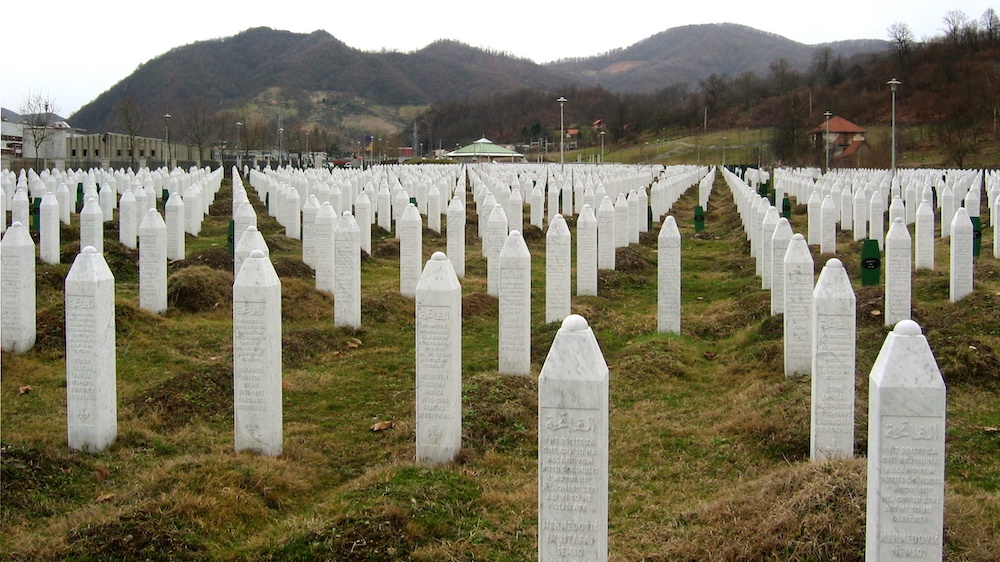
It’s been horrific to see the levels of dehumanization. That they’re considered terrorists, that they’re all extremists, that they got what they deserve. That sort of rhetoric is so similar to the Serbian propaganda prior to the genocide.
We were classified as terrorists. The Serb civilians were told, “If you don’t kill them, they’re going to kill you. They’re going to attack you.” Meanwhile, we had no plans of attacking. We wanted to live in peace with our neighbors, as we always had. We just wanted freedom, just like any other person wants. There wasn’t a systematic plan in place of the Bosniak Muslim population to ever attack any of its neighbors. But there was a systematic plan in place from Serb leadership to attack and exterminate the Bosniak Muslim population.
In order for any government to to commit a genocide, it needs the enablement of the population. We’ve seen in the Holocaust that people stood by and stayed silent while Jews were taken off to concentration camps, while their properties were looted, while they were forcibly displaced and put in ghettos all over Europe.
So, for any government to commit genocide, they have to push severe propaganda. It’s disinformation with the goal of making that population of people so fully dehumanized that when we start to bomb and kill and massacre them, the world just simply stands by, because to them these are not valuable lives. These are not human lives. They are animals to be exterminated, and if we don’t exterminate them, they’re going to attack all of us. They’re going to attack the sanctity of our life, of the way that we live our lives.
And this letter to Joe Biden by Sara Roy:

I don’t know if my friends and their families are among those murdered or injured by Israel. But I do know that this is not the first atrocity and it won’t be the last if the barbarity continues to be justified by you and others with the power to stop it. You call for a ‘humanitarian pause’, which I do not understand. What does a pause mean in the middle of such carnage? Does it mean feeding people so they can survive to be killed the next day? How is that humanitarian? How is that humane?
How much more evidence do you need to call the murder of more than eight thousand people, including 3500 children, the destruction of generations of families and the levelling of most of Gaza’s infrastructure – hospitals, schools, homes – a war crime rather than an act of self-defence? Clearly, Israel has killed more civilians in Gaza than Hamas fighters.
And this piece by Gideon Levy:

A Hamas terrorist was taken out of the debris, carried in his father’s arms. His face is covered with dust, his body jerking like a sack, his stare blank. It’s not clear if he’s alive or dead. He is a toddler of three or four, and his desperate father rushed him to the Gaza Strip's Indonesian Hospital, which was already bursting with wounded and dead people.
Another terrorist was extracted from the wreckage. This time she’s clearly alive, her fair, curly hair is white with dust; she’s five or six, being carried by her father. She looks right and left, as though asking where help will come from.
A man in a tattered vest scribbles here and there, a white sheet folded like a shroud in his hands, covering an infant’s body, and he’s waving it in despair. It’s the body of his son, a newborn baby. This infant hadn’t yet had a chance to join Hamas’ military headquarters in the Jabalya refugee camp. He had only lived a few days – a butterfly’s eternity – and was killed.
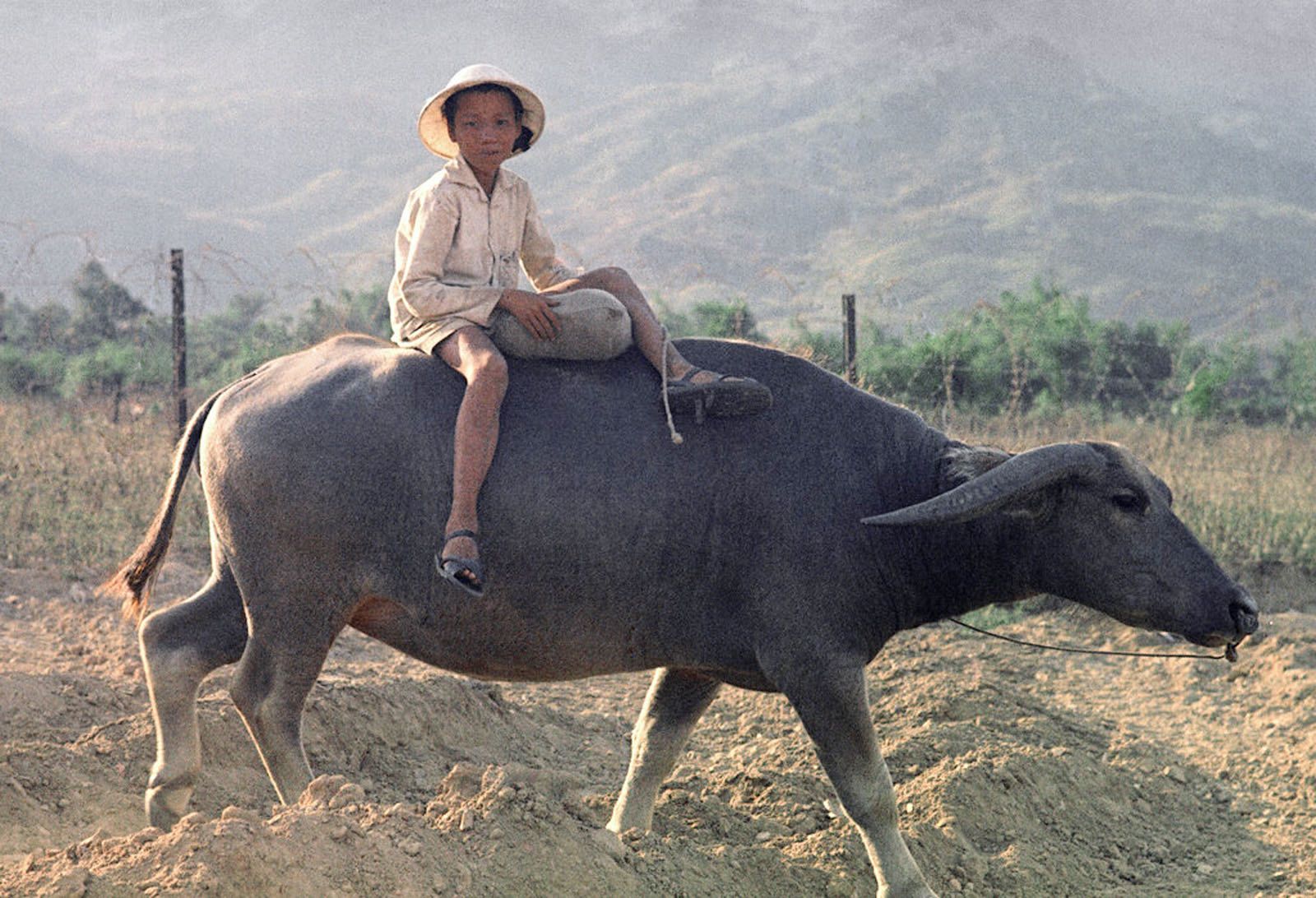
My whole life I’ve never seen anything like it
This story appears in my book A Creature Wanting Form.
The March Against Death began on a Thursday night fifty-three years ago today at Arlington National Cemetery where they make the graves very handsome.
There are roughly 400,000 ugly bodies in the handsome graves there and fifty-three years ago at least that many living bodies marched on DC that weekend in a series of protests because the dead weren’t available to march for themselves they were otherwise engaged.
This is unrelated but I just thought of a scene in the Watchmen TV show where the main guy is making breakfast for his young children and one of them asks where their uncle figure who was killed is now and the guy goes before he was born he was nowhere and now he’s nowhere again.
Then he made waffles and the kids got invested in that.
Many of the protesters on that Thursday in DC carried signs with the names of people who had killed and been killed in Vietnam and would perhaps have their bones shipped all the way back to the famous cemetery before all was said and done. There was a lot more killing and being killed to do as it was only 1969 and it wouldn’t all stop for another four to six years depending on how you tabulate the accumulation of bodies.
Wait maybe Watchmen is related because the Vietnam War plays a big role in the plot of the comic book.
I think about the Vietnam War sometimes and it seems as distant in history as the invention of the automobile to my life but it wasn’t. I was almost starting to be born a year or two or three or four or five after the last person was killing or being killed there. My mother was a teenager and she was almost ready to have her second baby but this one she would get to hold for more than 60 seconds before the nurses’ mood changed.
They say almost 60,000 of our brave heroic soldiers died over there and people always say we lost that war but around two million Vietnamese died too so I don’t know what it really means to lose under that type of accounting.
Some of the signs the marchers carried also had the names of villages that had been destroyed.
It was cold that day in 1969 and when the protesters marched single file from Arlington across the bridge to the White House they were bundled up pretty good and as they passed the fence around the president’s house they paused and yelled out a name of the dead. Some of them were quiet and timid in doing so and some of them were so angry their voices were hoarse and their bodies shook.
The My Lai massacre had recently been exposed around then and people weren’t very happy about that as you might imagine. We used our helicopter guns against kids.
I understand obviously why machine-gunning civilians to death is worse than machine-gunning “the enemy” to death and I guess the thinking behind that is the civilians aren’t capable of or actively trying to hurt “us” and so there is no justification to slaughter them but I never understand why the people who draw that line don’t also extrapolate it out to its inevitable widening conclusion when it comes to starting the wars in the first place.
“My conscience won’t let me go shoot my brother, or some darker people, or some poor hungry people in the mud for big powerful America,” Muhammad Ali said around 1967 on his refusal to enlist.
“And shoot them for what?”
Elsewhere in the country some of the parents of those who killed and were killed in Vietnam tried to bar the protest group from speaking the names of their dead children.
They didn’t like the idea of their children being used for politics.
One by one each of the protesters deposited their signs with the names of the dead into prop coffins they had set up and Nixon was up late into the night watching it all unfold on TV like a sweaty pervert. I was going to say but thankfully now he’s in Hell with the rest of our presidents but the truth is he’s nowhere.
Nothing particularly violent happened that weekend. At least not in DC anyway. Lots of violent things happened in Vietnam. As the protest grew into the hundreds of thousands the military and the police were standing by with many of them hiding out of sight in case they had to ambush what must have seemed like an occupying force. It’s got to fucking suck to have your city invaded I would imagine.
I’m pretty sure the whole thing about protesters spitting on soldiers when they came back from Vietnam was made up or else greatly exaggerated but if it did happen I bet they all would have much preferred to spit on Nixon they just didn’t have a good sight on him which is exactly how war works. You have to shoot whoever is closest and it’s never the main bad guys.
Nixon was asked a few weeks earlier whether or not anyone from the burgeoning protest movement had convinced him to reconsider the war and he said lol no it’s just the hippies on college campuses he said. It’s not real people. He said it was basically no big deal. Thankfully our leaders don’t treat the left like that anymore.
I read a newspaper story where some people were quoted saying the protesters were all enemies of freedom and so on. You can probably imagine what they said verbatim on your own. It’s funny to think that the Boomers had Boomers of their own who hated them all the same.
On Saturday of that weekend in 1969 around 500,000 gathered across from the White House and lots of performers were there like Pete Seeger and John Denver and Arlo Guthrie and they all sang “Give Peace a Chance” etcetera and maybe it worked I don’t know but around that same time Nixon was escalating our project of carpet bombing the unmerciful shit out of Cambodia and that would go on for a few more years.
Four students at Kent State were murdered by the Ohio National Guard in May of 1970 during protests against that bombing campaign. Neil Young wrote a song about that shooting which you know I’m sure.
One time I was walking across the bridge from Georgetown to Arlington with a girl I had just started seeing. It would have been around 1998. I don’t remember much about the date in question except that we probably had something for dinner that didn’t agree with me because halfway across I was paralyzed by sudden onset diarrhea poisoning. There aren’t many hard and fast rules about the mating rituals of young humans but I am fairly certain one of them is don’t shit your pants in front of the other person and so I smuggled this dark secret of my bowels and its boiling stew across the bridge marching as stoically as I could manage and after what seemed like ten miles a McDonald’s appeared in the distance like an oasis for a guy crawling in the desert and I hustled inside and as I was opening the door to the stall of the bathroom and pulling my pants down in one smooth motion I sprayed a torrent of shit all over the wall like a firefighter who lost control of his hose. Then it was out of me and I felt better. I tried to clean up as best I could but I don’t think I did a good enough job so I am sorry to whoever was working at that McDonald’s that night if you’re reading this.
On my phone just now I saw a nice bowl of moules-frites and a drone photo a guy took of his wife lying on the beach in Puerto Rico and some foliage in Massachusetts and a pop star in lingerie riding a mechanical bull and a rum cocktail someone had poured into a hollowed-out gourd and a sunset on the Florida Keys and the shadow of a figure in the tall grass on a gray marsh and the charred remains of a car destroyed by a fire and an ad for knives and an ad for pants and an ad for sneakers and an ad for blazers and a dancing robot dog with a machine gun on its back and somebody’s dead grandfather and everybody’s dead David Bowie and I thought about how it was all supposed to make me covetous of something I don’t have and then I saw someone in Costa Rica posted a series of videos of some hatchling turtles or tortoises I don’t know the difference and they were crawling out of a hole in the sand confused and blinking in the red light.
Some of them struck out instantly for the ocean instinctively and some lingered and reached out with their flippers to pull the next one close for safety and didn’t seem to know what direction they were meant to go.
My uncle who was married to one of my dead father’s dead sisters was in Vietnam but I don’t know him anymore. He gave me a POW/MIA sticker that I put in my bedroom window when I was a child. I didn’t really understand what the concept meant but I remember Rambo was especially sore about it.
The other day I was talking to my other living father and he told me his dog had died that week. He had rushed her to the animal hospital and they couldn’t save her and he was fucked up about it. He told me whenever he took the dogs walking and running on the fields near the high school where I used to play sports that all the kids would know the dogs and pat them and stuff and I think he was proud that the local student athletes knew who his dogs were.
Then we talked about a high school classmate of mine who had died the day before from an overdose and her husband who had died from an overdose a couple years earlier. My friend who is a firefighter in the town I grew up in said he was on the call to her house the night she died and one of her little daughters was asking him why they weren’t rushing her mother to the hospital the whole time but I’m sure you can figure out why.
My niece had been over at the house hanging out the day before she died and her friend texted her the next day “mom is dead.”
Something about how she didn’t text “my mom” is fucking me up. Just lowercase “mom.” Of course that wouldn’t refer to anyone else in her experience.
Then my living father told me he was doing fine with his leukemia and from the way he tells it he has some sort of luxury leukemia that is basically nothing. I used to freak out about it when he first got it but now I barely even remember he has it. Then he joked about me dying young. Didn’t all your aunts and father die at sixty he said and I said I think so. He told me about when one of my dead aunts was on her deathbed. Her sister went to try to make amends and the first aunt was basically like no fuck you too late for that and she wouldn’t see her and then she died and then not too long after the other one died and then not too long after that me and everyone reading this died.
I don’t know if this is just a Massachusetts Irish thing but a weird part of getting older is finding out just how many of the people who used to watch you open Christmas presents went on to hate each other’s fucking guts.
The last time I saw that aunt she was in a coffin. I hugged her daughters who I was very close to growing up but don’t really see any more and then the next time I saw them it was at the funeral of one of their husbands who died from an overdose a couple years ago.
This is how you know this piece is kind of barely disguised non-fiction because if you made up so many overdoses in a row in a short story it would seem fake but not so in real life.
I haven’t seen any of them since then but probably will at the next funeral. Maybe when I overdose.
I don’t know what type of music any of those people I mentioned just now like or liked besides my living father. He likes Neil Young pretty good I think and sometimes he plays “Old Man” on the piano. I think he likes Van Morrison the best. At one point he must have liked Arlo Guthrie who was at that protest in DC because the first dog of ours I remember loving was an Irish Setter named Arlo and when he died I got pretty fucked up about it. Sometimes he’ll learn like an Oasis or Goo Goo Dolls song or something from the nineties where I am from and play it for me maybe to bond with me and I get the guitar and sing with him but that doesn’t happen as often as it used to anymore.
The last time I saw his mother alive we wheeled her down into the basement of the nursing facility where there was a piano and he played some songs for her while she sat there but I don’t know if she knew anything about it or anything at all.
Toward the end she would confuse him for her husband who had been dead for like twenty years and he would bust her balls about it like joking around pretending to be him and my mom would have to be like hey cut that out.
Everyone has read The Things They Carried the famous book of stories about Vietnam by Tim O’Brien.
I haven’t read it in twenty years or more maybe. Not since that grandfather I just mentioned was alive. I was reminded of it earlier this week when it was Veterans Day.
Even though O’Brien’s book was one of the most impactful collections of short stories I have ever read in my life it’s been so long since I’ve read it I don’t remember many details besides one which is the scene where the guy shoots a water buffalo to pieces bit by bit. He shoots it in the knee then the mouth then the tail and so on but it just won’t die and the rest of the platoon watches him doing it and are like what the fuck is this guy’s deal but they know because it was their deal too.
I remembered this morning that I remembered that scene and you probably do too and I was embarrassed in a way because it’s such a big dangling meatball of a metaphor about mankind’s cruelty and indifference to life like it’s the scene that’s supposed to punch you in the gut but it seems silly that it takes the systematic disinterested and casual slaughter of a dumb brute beast to drive the point home that killing is bad.
Why did I only remember the water buffalo dying of all the things in that book?
The first thing I could think of is that we think that in war the people on the other side are supposed to die and that is the natural order of things but the animal didn’t do anything to deserve its violent death.
I’m not sure why we don’t also extrapolate that out to its inevitable conclusion when it comes to starting wars in the first place.
I looked at my phone again and I saw a lineup of daiquiri shots on a brass bar that I’ve sat at too many times to count and a series of photos and videos of a young mother’s baby either a boy or girl I don’t know the difference and it was crawling around in the grass confused and blinking in the new sun and didn’t seem to know what direction it was meant to go and a bunch of troops sitting on a tank with the caption thank you for your service. Then I saw a football player had posted a series of photos of himself shaking hands with troops in various types of troop hats and a fancy hotel in Newport Rhode Island I stayed in one time offering a holiday special and the gang from the funny improv podcast yucking it up and a sad bowl of miso soup and Rod Stewart looking fashionable in a coat and another photo from the Florida Keys of some scuba divers unfurling a giant American flag underwater at the site of a sunken navy ship at a place I have snorkeled at.
Home of the free because of the brave the caption on the photo read and the flag is billowing out from the focal point of the camera like an enormous poisonous jellyfish and the guys yanking it along all look so proud. They have diving masks on but you can still tell they’re smiling and really happy about what they did here.
